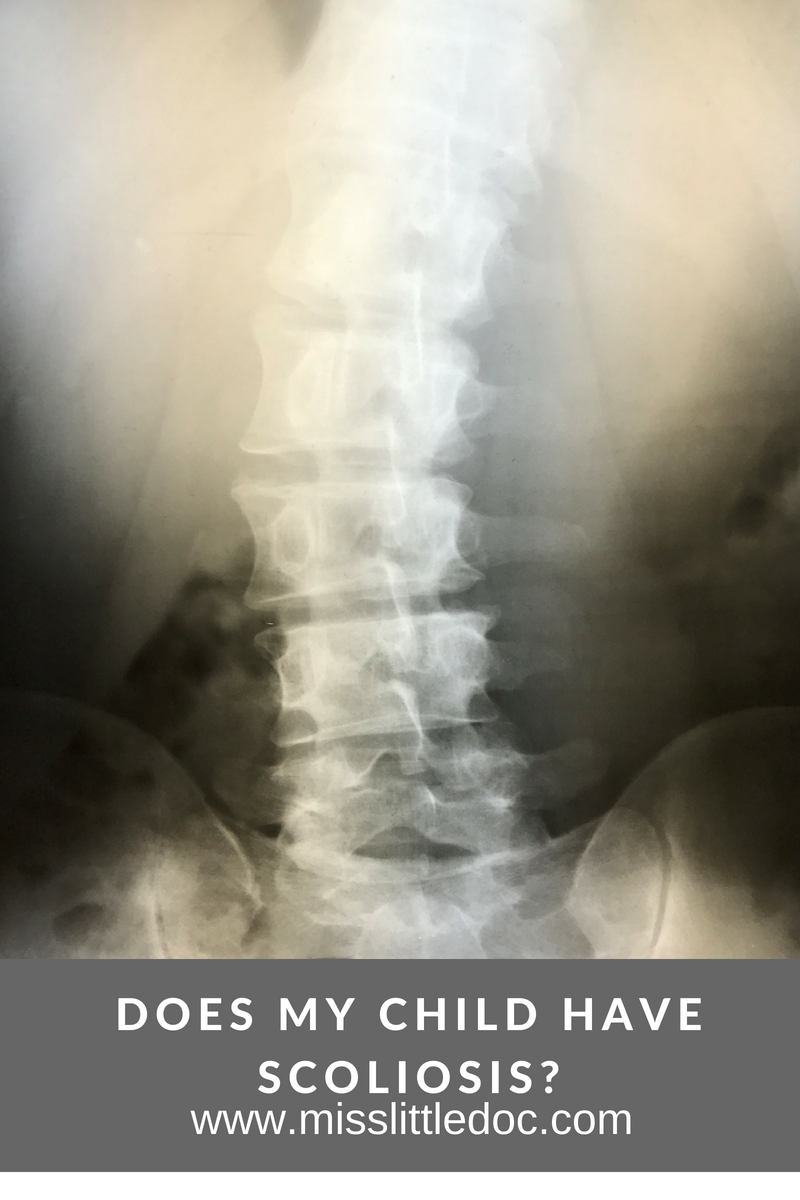Does My Child Have Scoliosis?
Have you ever wondered what your spine looks like? Do you have a straight spine or a crooked spine? Is it a “s” curved or is it twisted? Do you have any symptoms or are you symptom free?
Scoliosis is super common. It affects 2-3% of the population or 6-9 million people. (Which I think is a low estimate.) It can cause pain or you may have zero symptoms of pain! Primary age of onset is 10-15 years old, although it may not be diagnosed for many years.
What is Scoliosis?
Scoliosis is a condition of side-to-side spinal curves. On an x-ray, the spine looks more like an “S” or a “C” than a straight line. The curves can make the person’s shoulders, hips or waist appear uneven. In scoliosis, the spine may also be rotated, causing one shoulder blade or muscles of the spine to be more prominent.

Causes of Scoliosis
Congenital– Something you were born with. This is due to a malformed vertebra, spina bifida, or other anomaly.
Idiopathic (unknown cause)- accounts for 80% of cases. Scoliosis is thought to be hereditary. So if a family member has a known case of scoliosis, your chances are greater.
Structural Scoliosis– This is due to congenital reason or an accident that has made the vertebra change position and is not correctable.
Nonstructural Scoliosis– Due to having one leg longer than the other. Muscles spasms, infections, and repetitive motions everyday. (Such as bending to only one side or carrying heavy items on just one side due to job duties.)
Common symptoms associated with scoliosis include:
- One shoulder that is higher than the other (check out Staying Balanced)
- One shoulder blade that sticks out more than the other
- One pant leg longer than the other or uneven hip height
- Problems breathing due to a reduced/uneven area in the chest for lungs to expand
- Upper back or lower back pain
- Headaches due to structure
How is it Diagnosed?
Scoliosis can be diagnosed doing an examination and taking X-rays of the spine. A standing evaluation of the spine is also part of the physical examination. Be sure to have your child checked by a professional. A chiropractor is very knowledgeable in scoliosis and treatment of scoliosis.

Treatment Options
Chiropractic care!! When you go to a chiropractor, they will do a physical exam and most likely take X-rays (at least most likely at my office). When X-rays are taken, the curve can be measured, to tell the degree of curvature.
Leg lengths can be measured to see if a heel lift can halt or help correct the curvature. Chiropractic adjustments can stop the curve from progressing and help correct the curve. Muscle strengthening exercises can be given to help strengthen the spine and core muscles, to even out the muscle contraction.
If the degree of scoliosis is causing breathing problems or if the pain can not be “helped” with chiropractic care, a brace can be fitted for the patient. This can help the curve from progressing and getting worse. In severe cases, spinal surgery can be an option, IF everything else fails.
Chiropractic
To get checked for scoliosis or your cause of pain, visit a chiropractor. Starting early and getting correction will save you time, money and pain. Get your children checked early and often (especially through growth spurts). Getting your children checked will not only allow your child to stay healthy, it can help prevent health problems!
~Dr. Lacey~
Carder Chiropractic Clinic, INC.
El Reno, OK 73036



